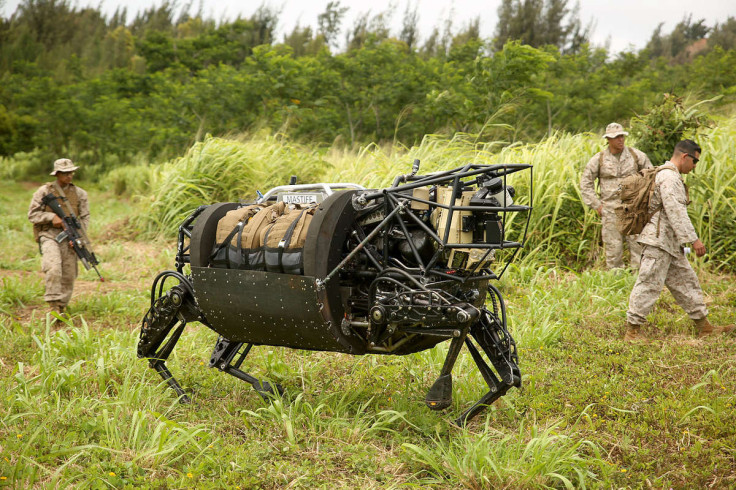US Army scraps $42m Darpa robot for being too noisy

The United States Marine Corp has abandoned plans to use a robotic mule in combat situations, claiming that the amount of noise it makes risks giving away the position of troops to the enemy. The LS3, or Legged Squad Support System, had been the centre piece of a significant push by the US Army to integrate thousands of robots into its forces by 2030.
Development of the LS3 first began in 2008 after the Defense Advanced Research Projects Agency (DARPA) offered a $32m (£21m) contract to Alphabet's Boston Dynamics. A further $10m was awarded in 2013 for testing the quadruped robot, demonstrating that it could cope with carrying loads of up to 180kgs across rugged terrain.
The noise produced by the gas-powered engine of the LS3 robot was cited as a major issue by Marines in tests and proved to be a challenge that engineers were unable to overcome.
"As Marines were using it, there was the challenge of seeing the potential possibility because of the limitations of the robot itself," Kyle Olson, a spokesperson for the Marine Corps Warfighting Lab, told Military.com.
"They took it as it was: a loud robot that's going to give away their position. We tend to make things that are fanciful and strange. Learning from it was a big part, and we're still learning."
An electric-powered robot named Spot was developed in an effort to solve the noise issue but it was not autonomous and its lighter frame meant that it was only able to carry loads of up to 18kgs. Spot's limited capabilities meant that it was not suitable for use in the field.
"I see Spot right now as more of a ground reconnaissance asset," said James Pineiro, head of the Ground Combat Element branch at Warfighting Lab. "The problem is, Spot in its current configuration doesn't have the autonomy to do that. It has the ability to walk in its environment, but its completely controller-driven."
© Copyright IBTimes 2025. All rights reserved.






















